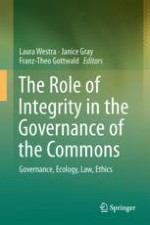2017 | OriginalPaper | Chapter
Bio-economy as a New Perspective for Solving Climate Change?
Authors : Eva Cudlínová, Miloslav Lapka, Jan Vávra
Published in: The Role of Integrity in the Governance of the Commons
Publisher: Springer International Publishing
Activate our intelligent search to find suitable subject content or patents.
Select sections of text to find matching patents with Artificial Intelligence. powered by
Select sections of text to find additional relevant content using AI-assisted search. powered by
